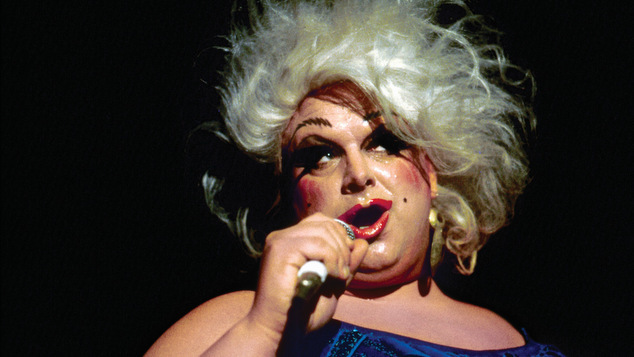Divine found success around the globe in film and music
Harris Glenn Milstead was better known by his stage name Divine. The Baltimore native became friends with filmmaker John Waters in the 1960’s and they collaborated together on many film projects.
After appearing in several short films, Divine took a lead role in Waters feature films including Mondo Trasho (1969), Multiple Maniacs (1970), and Water’s breakthrough cult hit Pink Flamingos (1972). Alongside making theatre appearances in San Francisco, Divine was a regular performer in Water’s films including Female Trouble (1974), Polyester (1981) and Hairspray (1988). When home video became popular in the 1980’s suddenly Divine was known around the globe. Divine also appeared in films by other directors including Lust in the Dust (1985) and Trouble in Mind (1985).
In the early 1980’s Divine also started releasing dance music and had big hits with You Think Your a Man, Shoot Your Shot, I’m So Beautiful, and Walk Like a Man. Divine worked with Hi-NRG producer Bobby Orlando and later Pete Waterman. Divine was a regular guest on television chat shows and was painted by both Andy Warhol and David Hockney.

On March 7, 1988, just three weeks after Hairspray was given a wide release in movie theatres, Divine died in of heart failure aged 42.
Mistead was gay and Divine was his drag persona, he avoided speaking about his sexuality early in his career, but was more open in his final years. He avoided talking to the media about LGBT+ rights, partially at the advice of his manager, who believed it would have a negative effect on his career.
Divine’s music has continued to be played in queer clubs, and the films have become cult classics. Anohni paid tribute to the performer on the first Antony and the Johnsons album, and Roisin Murphy made a homage to the star with her music video for Movie Star by re-enacting scenes from Multiple Maniacs. Divine was also the inspiration for Ursula the Sea Witch from Disney’s The Little Mermaid.
CBS Reports airs ‘The Homosexuals’ in 1967
In 1967 US television viewers watch an episode of weekly current affairs program CBS Reports which focused on homosexuality. The episode, which was hosted by reporter Mike Wallace, was the first documentary to look at homosexuality that aired on network television.
The episode took three years to make and featured interviews with psychiatrists, police and gay men – who usually appeared incognito in shadow or behind large pot plants. In his commentary Wallace described gay men as promiscuous and unable to form stable relationships.
“The average homosexual, if there be such, is promiscuous. He is not interested or capable of a lasting relationship like that of a heterosexual marriage. His sex life, his love life, consists of a series of one–chance encounters at the clubs and bars he inhabits. And even on the streets of the city — the pick-up, the one night stand, these are characteristics of the homosexual relationship.” Wallace told television viewers.
Years after the documentary aired it was revealed that earlier cuts of the film were rejected because the gay men interviewed seemed too happy with their lives, and producers insisted more interviews that showed gay men as unhappy be included.
It is estimated that 20 per cent of American television viewers saw the show. LGBTI rights activist Wayne Besen labeled it “the single most destructive hour of antigay propaganda in our nation’s history.”
After the program aired many of the interviewees expressed frustration that their responses had been edited in a way that showed them to appear more negative, and one participant, Jack Nichols, was fired from his job the day after the episode aired.
OIP Staff, This post was written in 2021 and subsequently updated.




